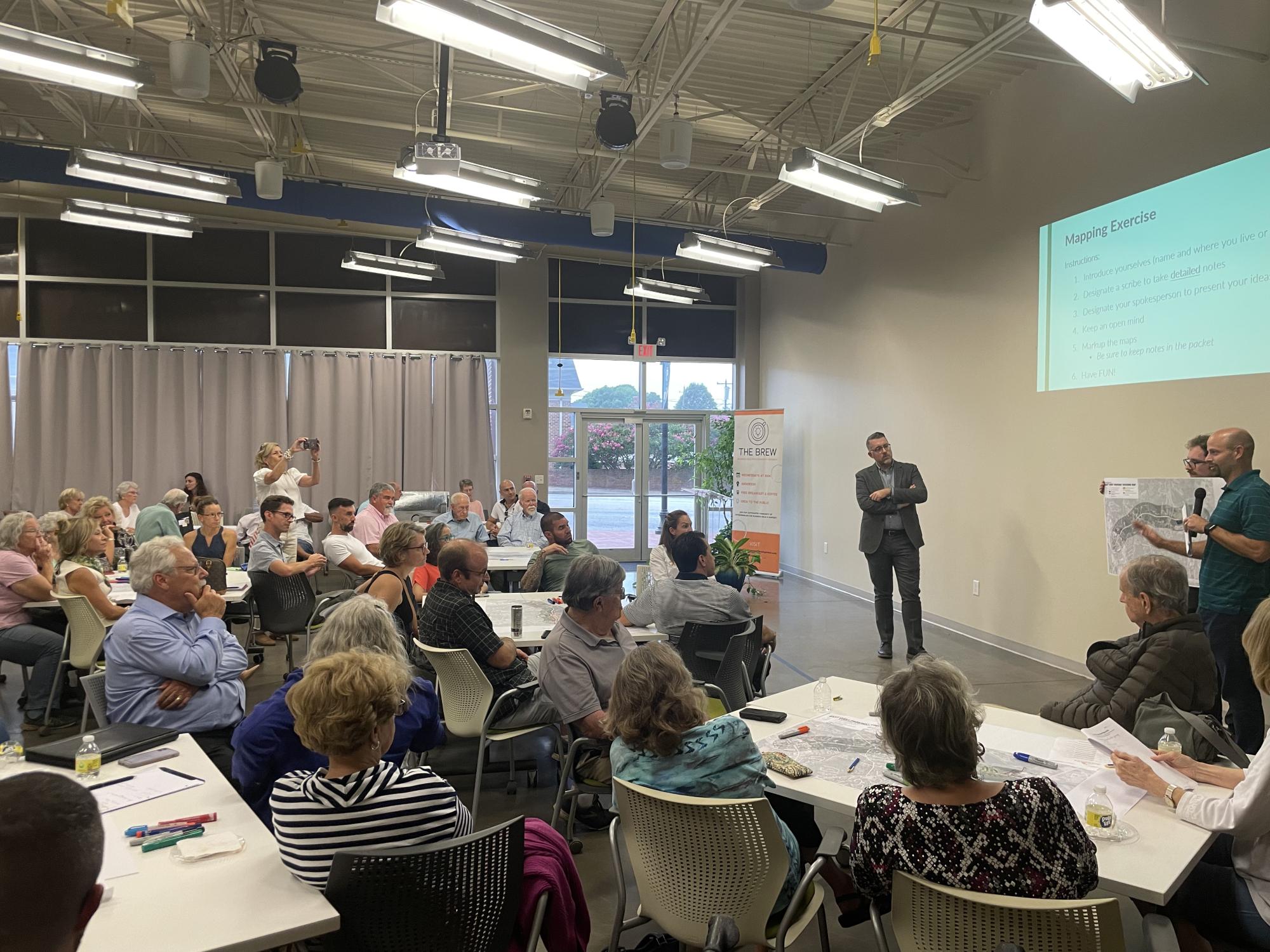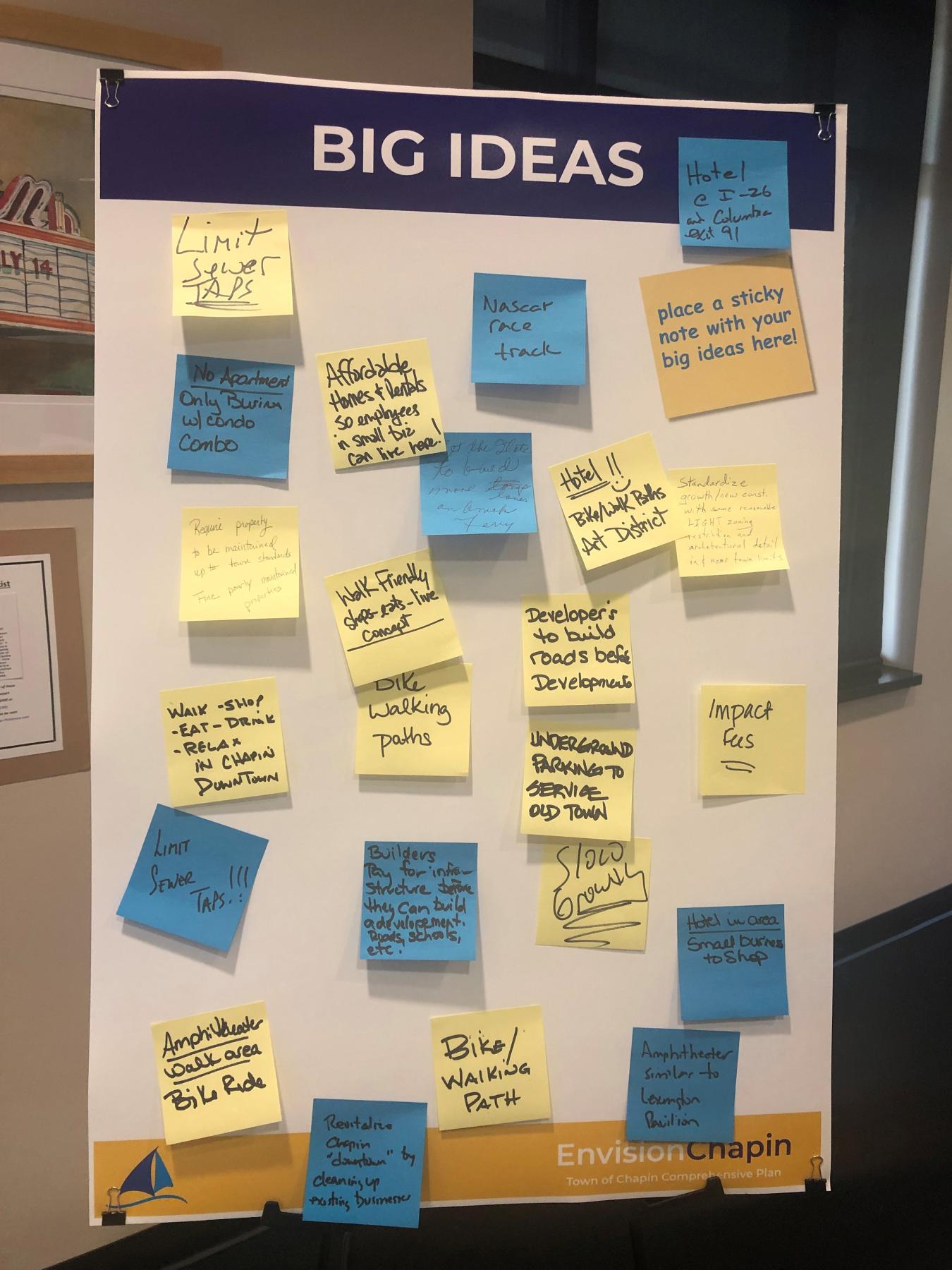South Carolina law requires cities and towns to develop a comprehensive plan that incorporates community input on how to handle future development and growth. Ten overarching elements named in the law guide the comprehensive planning process. Many municipalities across the state — including Anderson, Chapin and Hanahan — illustrate how to foster public engagement in this process.
In Berkeley County, growth is top of mind for the City of Hanahan, which recently updated its “Hanahan 2040: Pathway to the Future” comprehensive plan. The 20-year plan is revisited with community involvement every 10 years.
“We had a ton of input from our citizens,” said City Administrator Courtney Soler. “This was one of the most important things to all of us – we really wanted our citizens to be engaged, and we wanted them to have many different formats of ways to engage with the plan.”

City officials set up a series of four open houses, including one with online capabilities to allow participation from home. A public survey also ran for 90 days to elicit additional community feedback. To garner more responses, a QR code linked to the survey was put on one of the fire trucks, and QR codes were handed out to residents. Signage was on display at events around town and at city hall, and the city promoted the effort through social media as well.
Once the survey closed, staff presented a summary to the planning commission from which the plan’s vision statement, guiding principles and goals were developed. The plan identified four opportunity areas, focusing on community character, public services, growth management and value of land.
Hanahan has seen immense growth as the Charleston real estate markets surge, and that plays an important role in how the city will use its plan.
“Hanahan is somewhat built out, so [the North Rhett area] is really the only place that has the opportunity to be develop. One of the major keys of this comprehensive plan is [asking] — how do we continue that growth despite us being almost built out?” Soler said. “It’s one of our main priorities here in the city to say, ‘We hear what you’re saying, public, we love to hear from you.’”
In the Upstate, downtown Anderson is seeing a tremendous amount of growth, with the addition of 59 new businesses added in the past four years, a 99.4% apartment occupancy rate, and 2,000 new single-family homes. To plan for this and future growth over the next 20 years, the municipality launched its “Plan This City” comprehensive plan initiative last fall. The project is anticipated to take 18 to 24 months.

“The City of Anderson has gone through iterations of development and planning in the past, and we’re experiencing a lot of growth and a lot of growth pressure,” said Assistant City Manager Andrew Strickland.
City council tasked the project’s steering committee to revamp everything from the development code to its subdivision and zoning ordinances. Building upon its current downtown master plan, the comprehensive plan will outline important key elements to support the city’s growth.
“We have two components. The first is a comprehensive plan and the second piece of that — it kind of runs concurrently to some degree — is a whole new unified development ordinance,” Strickland said.
The process includes a dedicated website which outlines ways that the community can get involved, from attending meetings and events, to participating in its online questionnaire. The site features a function called “map.social,” which allows residents to drop a pin on a map where issues need to be addressed.
“We’re just in the thick of things now, the first piece being the public engagement, before our consultants fully dive into developing the plan and the UDO,” said Mary Haley Thompson, director of strategic projects. “We’re meeting with a lot of different groups to hear what the needs are, what the challenges are, what areas they want to see developed so that our consultants have all that input to be the guiding force behind the plan that they develop.”
In Lexington County, the Town of Chapin passed its new “Envision Chapin” comprehensive plan last December. Serving as a guiding document for the town as it experiences continual growth, the community played a large role in the two-year planning process alongside the comprehensive plan committee and consultants.

“For the Town of Chapin, it was really important that we had a significant amount of public support as well as engagement, so we really did a good job of working with our public partners and our community members to make sure that from the very beginning of the project and throughout the development of the comprehensive plan that they were engaged and that we were soliciting their input,” said Town Administrator Nicholle Burroughs.
To elicit public engagement, the town hosted small-group listening sessions including community leaders from the faith-based community, government officials, various industry partners, developers, and local business owners, to discuss concerns, opportunities and strengths.
The town launched a community survey through its website, social media and email sent to residents who signed up for email notifications, and received more than 600 responses.
“For a small town like ours, [getting] 600-plus responses was absolutely incredible, and that was due to a lot of effort on our part — publicizing what we’re doing, explaining the comprehensive plan process, and giving the opportunity to community members to provide input,” said Burroughs.
As the town neared the end of the project, it hosted a drop-in community meeting where residents could provide further insight on findings regarding development and land management.
“We really wanted to make sure that the public had input into those areas, and it was a great opportunity for the community to come in and to meet our staff,” Burroughs explained.
A key goal, highlighted throughout the planning process, was the need for growth strategies, according to Burroughs.
“There was a lot of concern from the public regarding the amount of rapid growth we have experienced up until now, and the surrounding area has experienced up until now, and how that growth was going to impact the infrastructure in our area, as well as what the future was going to look like,” she said.
The unified development and zoning ordinance was one of the strategies implemented to address this growth.
“The Town of Chapin is really, really proud of the comprehensive plan document that we were able to develop, but we’re even more proud of the engagement that we’ve had with the community and the input that the citizens provided.”
In many parts of the state, surging population and business development have put pressure on municipal governments as their communities figure out how they want to evolve. Prioritizing public input in the comprehensive plan process can reassure residents that they have knowledge of this process, and a voice in it.
